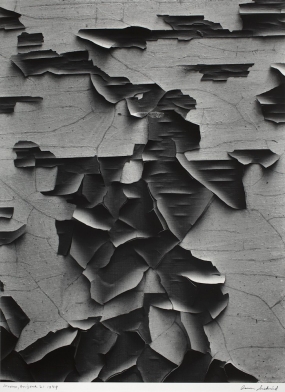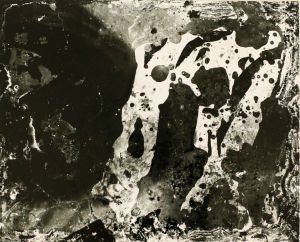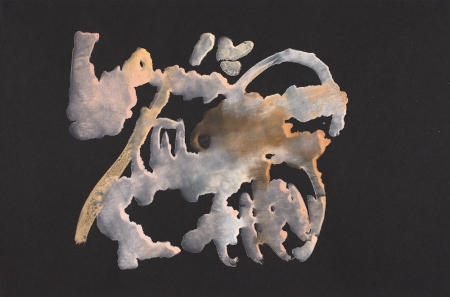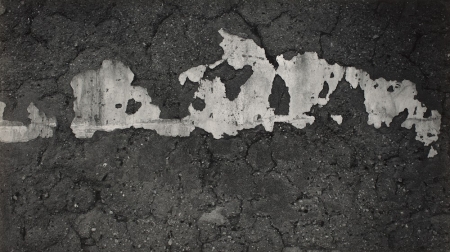In 1949, at the suggestion of gallery owner Charles Egan, the photographer Aaron Siskind (1903–1991) went to Prescott to visit Sommer. He stayed for three months, which marked the beginning of decades of friendship. During Siskind’s visit, the two men saw each other daily, shared Sommer’s darkroom, and went on several photographing expeditions, including one to the ghost town of Jerome, Arizona, where Sommer had also taken Weston a decade earlier. At the time of this trip, Siskind was undergoing a profound change in his artistic life. He had been a member of the socially concerned New York Photo League for over ten years, but in 1944, he started to shift his photography toward greater abstraction. Between 1947 and 1951, four exhibitions of his work at the Egan Gallery established his reputation as the photographer most closely associated with the abstract expressionist movement.[1]
Frederick Sommer in Context
FRIENDSHIP WITH AARON SISKIND

Aaron Siskind, Jerome, Arizona 21 1949, 1949, printed 1975, gelatin silver print, National Gallery of Art, Patrons’ Permanent Fund, Courtesy the Aaron Siskind Foundation

Frederick Sommer, Found Negative, 1948, gelatin silver print, Collection of Dan and Mary Solomon. © Frederick & Frances Sommer Foundation
During their outing to Jerome, Siskind created one of his most iconic images, while Sommer did not bring his camera at all. Instead, he found old X-rays at the abandoned hospital and joked that his negatives had already been developed for him. Sommer’s Found Negative may have been printed using one of those X-rays.[2]
Though the images speak to Siskind’s and Sommer’s shared interests in photographic abstraction, the story of their creation reveals an important difference in the artists’ attitudes. While Siskind sought out the perfect detail to capture in his environment, Sommer favored free-wheeling experimentation and a more leisurely approach. For Sommer, moreover, the visual sensibility he shared with Siskind could be expressed in a variety of ways, such as the abstract Drawing, or a photographed assemblage like Venus, Jupiter and Mars.

Frederick Sommer, Drawing, 1948, tempera, National Gallery of Art, Gift of Frederick Sommer

Aaron Siskind, Yuma 7 1949, 1949, gelatin silver print, National Gallery of Art, Gift of Richard and Judith Smooke, Courtesy the Aaron Siskind Foundation

Left: Frederick Sommer, Venus, Jupiter and Mars, 1949, gelatin silver print, National Gallery of Art, Gift of Frederick Sommer.
Right: Aaron Siskind, Manzanillo, Mexico, 1955, gelatin silver print, National Gallery of Art, René Huyghe Collection, Courtesy of the Aaron Siskind Foundation
[1] A chronology of Siskind’s life can be found on the website of the Aaron Siskind Foundation. See also "Aaron Siskind: The Egan Gallery Years 1947–1954," Robert Mann Gallery, 2008 and Keith F. Davis, Susan Krane, Britt Salvesen, and Claire Carter, At the Crossroads of American Photography: Callahan Siskind Sommer (Santa Fe, NM and Scottsdale, AZ, 2009), 29.
[2] Photographs from the Collection of Nancy Richardson, Sotheby’s auction cat., (New York, October 16, 2007), 24.